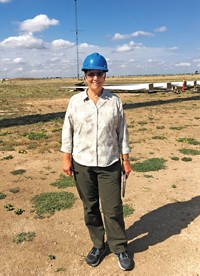Advertisement
Grab your lab coat. Let's get started
Welcome!
Welcome!
Create an account below to get 6 C&EN articles per month, receive newsletters and more - all free.
It seems this is your first time logging in online. Please enter the following information to continue.
As an ACS member you automatically get access to this site. All we need is few more details to create your reading experience.
Not you? Sign in with a different account.
Not you? Sign in with a different account.
ERROR 1
ERROR 1
ERROR 2
ERROR 2
ERROR 2
ERROR 2
ERROR 2
Password and Confirm password must match.
If you have an ACS member number, please enter it here so we can link this account to your membership. (optional)
ERROR 2
ACS values your privacy. By submitting your information, you are gaining access to C&EN and subscribing to our weekly newsletter. We use the information you provide to make your reading experience better, and we will never sell your data to third party members.
Environment
Journey To India
Dow Corning employees volunteer their expertise to local organizations
by Melody Voith
October 18, 2010
| A version of this story appeared in
Volume 88, Issue 42

In the early hours of Saturday, Sept. 11, Ronda Grosse and Ayesha Soares showed up for an unusual work assignment. After traveling for more than 24 hours, the two scientists, part of a group of 10 Dow Corning employee-volunteers, arrived in Bangalore to participate in a monthlong program to help small businesses bring improved technology to the citizens of India.
On the first day in Bangalore, “I was too excited to rest,” Grosse recalls. “A group of us walked around the neighborhood and watched the auto rickshaws and the cows in the street. We had our first meal together for $20 for 12 people. Most of us hadn’t even met yet.”
Back home, Grosse and Soares work for Dow Corning in Midland, Mich. Grosse is a science and technology group leader; Soares is a life-cycle assessment leader.
The 10 employees were split into three groups. One team was tasked with helping an organization called Ashoka write standards for renewable energy products in low-income housing. A second group is working with social enterprise organization Sustaintech on manufacturing and distributing improved cookstoves. And a third set out into the countryside to investigate better ways of marketing cleaner cookstoves to rural customers.
C&EN checked in with Grosse and Soares at the two-week mark of the trip. Grosse is on the household energy team, and Soares is working to improve the cookstove business. Both say the key to understanding how to help Indians adopt new technology is to be immersed in daily life there. “Staying in the community is very informative,” Grosse says. “We have blackouts, our water is not reliable—sometimes only a trickle—and it’s not usually hot.” Most families rely on solar-heated water fed by gravity from the roof, she observes.

But the experience is not at all about deprivation, both women say. Although electricity and water are iffy at best, “everyone is very hospitable. We visited a cookstove owner who had a shack and didn’t own much but insisted on offering us tea.” Soares recalls. And Grosse is impressed with the community closeness she is observing. “They look out for each other. As the economy grows, they’re not going to want to lose that,” she says.
During the group’s stay in India, efforts to develop and distribute cleaner cookstoves hit international headlines. Secretary of State Hillary Clinton launched the Global Alliance for Clean Cookstoves, a $60 million-plus public-private partnership aiming to replace current smoky biofuel cookstoves with healthier, more efficient—but still affordable—designs.
According to the alliance, cookstove smoke contributes to a plethora of illnesses and health problems, including early-childhood pneumonia, emphysema, lung cancer, bronchitis, cardiovascular disease, and low birth weight. It also says that carbon dioxide, methane, and soot from the fires contribute to climate change.
In addition to helping to clear the air, Dow Corning has another motivation for the Bangalore program: “To serve as a living laboratory for Dow Corning to explore new business opportunities that have the potential to improve the quality of life for people who do not currently benefit from the company’s silicon-based technology,” Chief Executive Officer Stephanie A. Burns said when launching the program.
To that end, Grosse and her household energy team are visiting organizations, including the Indian Institute of Science’s Centre for Sustainable Technologies, that are building greener housing with local materials. “We could see people working on green structures and see what they’re doing with rainwater harvesting, solar water heating, and natural lighting and ventilation,” Grosse says. “There is a lot of excellent technology that already exists, but there are challenges with community acceptance and change.”
Reflecting on her cookstove work, Soares notes that watching how communities use technology connects the idea of sustainability to her job. “This is really a core part of Dow Corning’s sustainability image: What can we do to meet the needs of people tomorrow using our silicon technology?” she says. “As part of our sustainable metric, this is a great first step.”




Join the conversation
Contact the reporter
Submit a Letter to the Editor for publication
Engage with us on Twitter